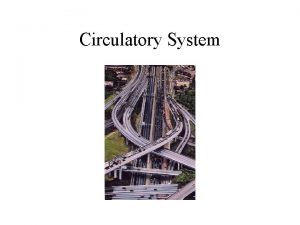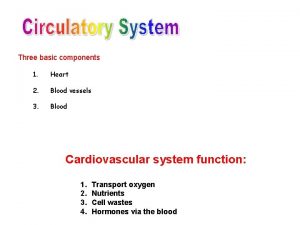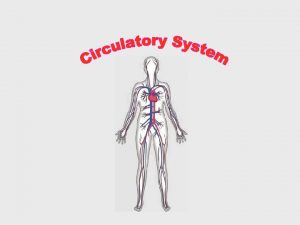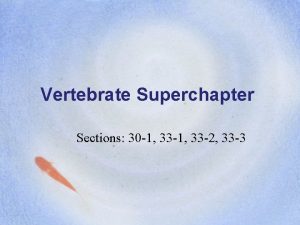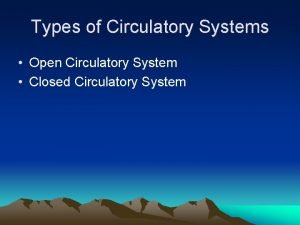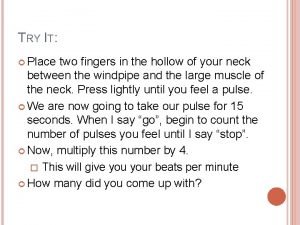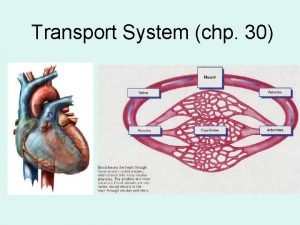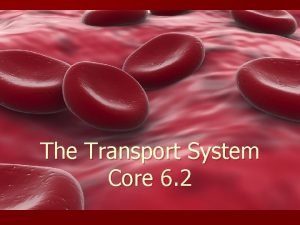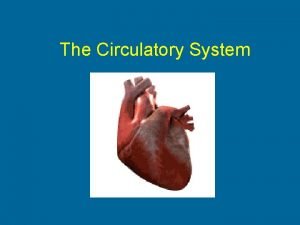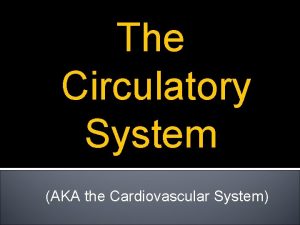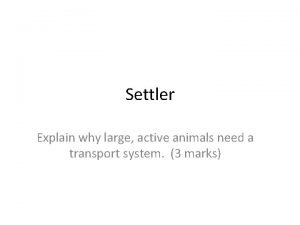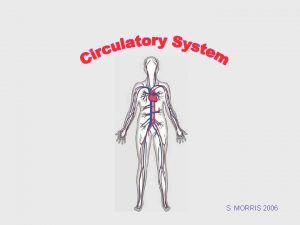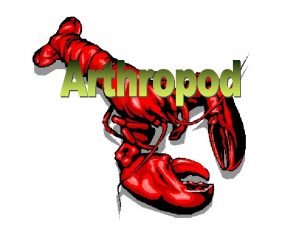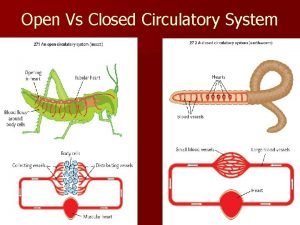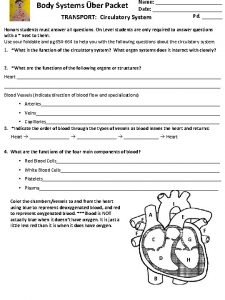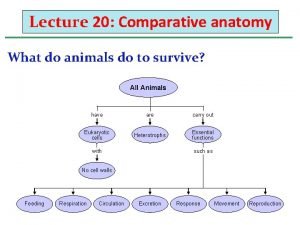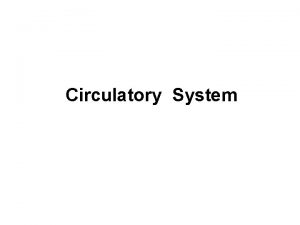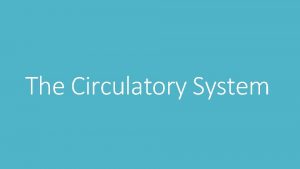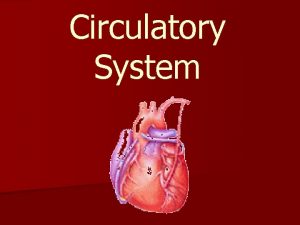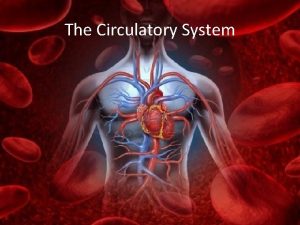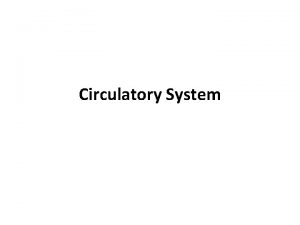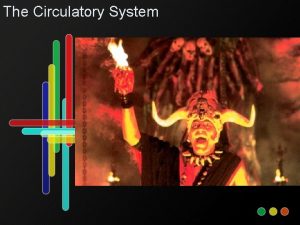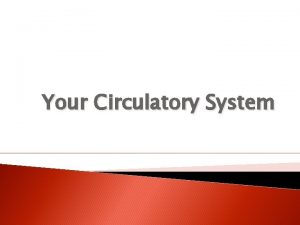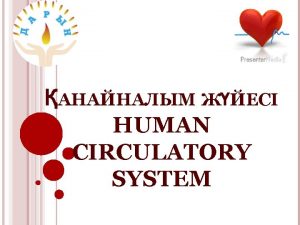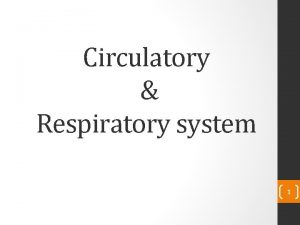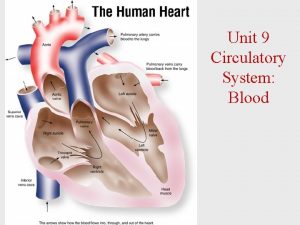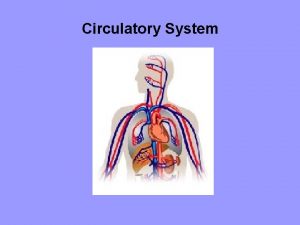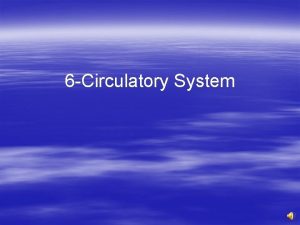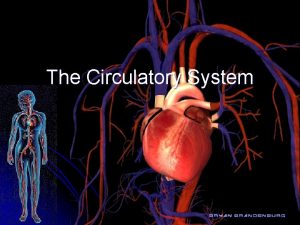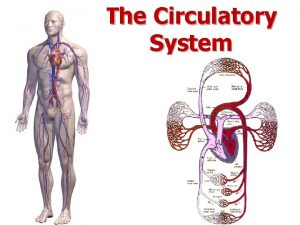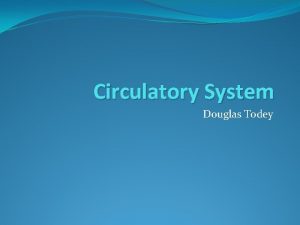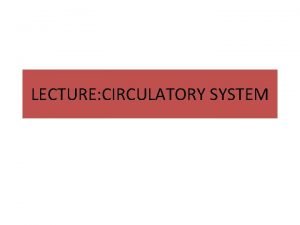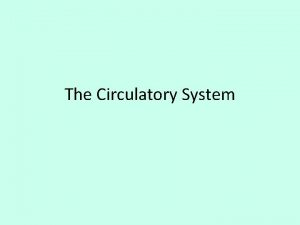THE CIRCULATORY SYSTEM Circulatory System Functions Transportation of























- Slides: 23

THE CIRCULATORY SYSTEM

Circulatory System Functions • Transportation of materials: – Oxygen and Carbon Dioxide – Nutrients – Hormones – Wastes – Antibodies

Circulatory System Functions • Fights infections and defends against foreign bodies

Circulatory System Functions • Maintains homeostasis by – Controlling proper concentration of fluids in the body – Helping to maintain the body temperature

Circulatory System Functions • Controls blood loss in the event of an injury

LEVELS OF ORGANIZATION Organ System- Circulatory ORGANS • Heart • Blood Vessels ORGAN FUNCTION a muscle that pumps blood throughout the body veins, arteries, capillaries that deliver blood to all parts of body

LEVELS OF ORGANIZATION • TISSUES – Blood (liquid tissue) – Smooth Muscle Tissue- in blood vessels – Cardiac Muscle Tissue- in heart • CELLS – Smooth Muscle Cells – Cardiac Muscle Cells – Red Blood Cells (RBC) – White Blood Cells (WBC) • OTHER SPECIAL COMPONENTS -Plasma -Platelets

3 TYPES OF CIRCULATION • PULMONARY • Between the heart and lungs • SYSTEMIC • Between the heart and the rest of the body • CORONARY • Blood flow to and from the heart

3 MAIN COMPONENTS OF THE CIRCULATORY SYSTEM • BLOOD VESSELS • HEART

BLOOD • A mixture – can be separated by density • A liquid tissue • Function = Transports materials Plasma 55% of whole blood White Blood Cells (WBC) & Platelets <1% Red Blood Cells 45% of whole blood

COMPONENTS OF BLOOD (pale yellow)55% -is made of 98% water -carries nutrients, hormones and other materials to cells PLASMA White Blood Cells <1%(large clear) -fight infection Red Blood Cells 45%(small disc shaped) -transport O 2 and CO -contain hemoglobin Platelets <1% (cell fragments) -form clots to stop bleeding

CIRCULATORY SYSTEM INTERACTIONS • Blood interacts with many other systems • Brings nutrients to cells • Brings oxygen and removes CO 2 *removes nitrogen wastes • Carries hormones that help regulate the body • Carries WBCs and antibodies that fight infection

FAQ: How does a scab form?

3 MAIN COMPONENTS OF THE CIRCULATORY SYSTEM • BLOOD VESSELS • HEART

Arteries © carry blood AWAY from the heart © have thick, strong elastic walls

Arteries carry oxygen-rich blood throughout the body.

Veins © carry oxygen- poor blood TO the heart © have thin, elastic walls with valves © valves help veins return blood to the heart

Veins carry oxygen-poor blood back to the heart.

VALVES KEEP BLOOD MOVING IN ONE DIRECTION

Capillaries © connect arteries and veins © walls of capillaries are one cell layer thick © surround every cell in the body © site of gas exchange

BLOOD VESSELS

Blood vessels, heart, lungs all work together to bring oxygen to and remove carbon dioxide from the cells.

Blood Vessels ______ carry oxygencarry blood rich blood away from organs and from heart to tissues to heart body ______ microscopic blood vessels located between arteries and veins
 Function of the circulatory system
Function of the circulatory system Coronary sulcus
Coronary sulcus Site:slidetodoc.com
Site:slidetodoc.com How respiratory system work with circulatory system
How respiratory system work with circulatory system Circulatory system and respiratory system work together
Circulatory system and respiratory system work together Circulatory system steps in order
Circulatory system steps in order Single loop circulatory system
Single loop circulatory system Circulatory system of lungfish
Circulatory system of lungfish Do clams have open or closed circulatory systems
Do clams have open or closed circulatory systems Sheep circulatory system
Sheep circulatory system Carbon dioxide levels in the blood
Carbon dioxide levels in the blood Closed circulatory system
Closed circulatory system Circulatory system job
Circulatory system job Smallest blood vessel
Smallest blood vessel Active animals
Active animals How circulatory system work
How circulatory system work What makes up the cardiovascular system
What makes up the cardiovascular system Gas exchange lungs
Gas exchange lungs Single vs double circulatory system
Single vs double circulatory system Phylum arthropoda marine
Phylum arthropoda marine Arthropoda
Arthropoda Open circulatory system vs closed
Open circulatory system vs closed Circulatory system foldable
Circulatory system foldable Invertebrate circulatory system
Invertebrate circulatory system
